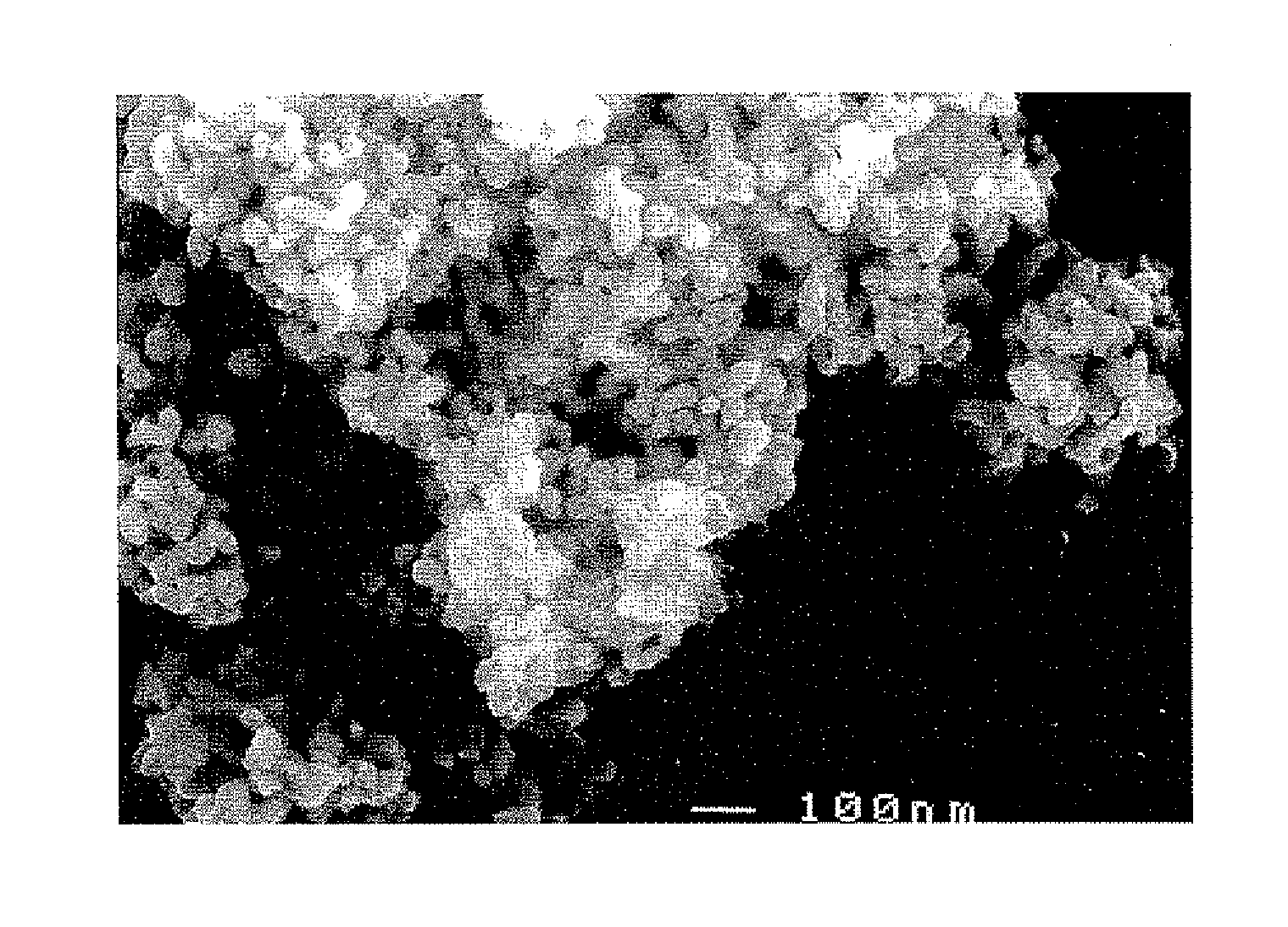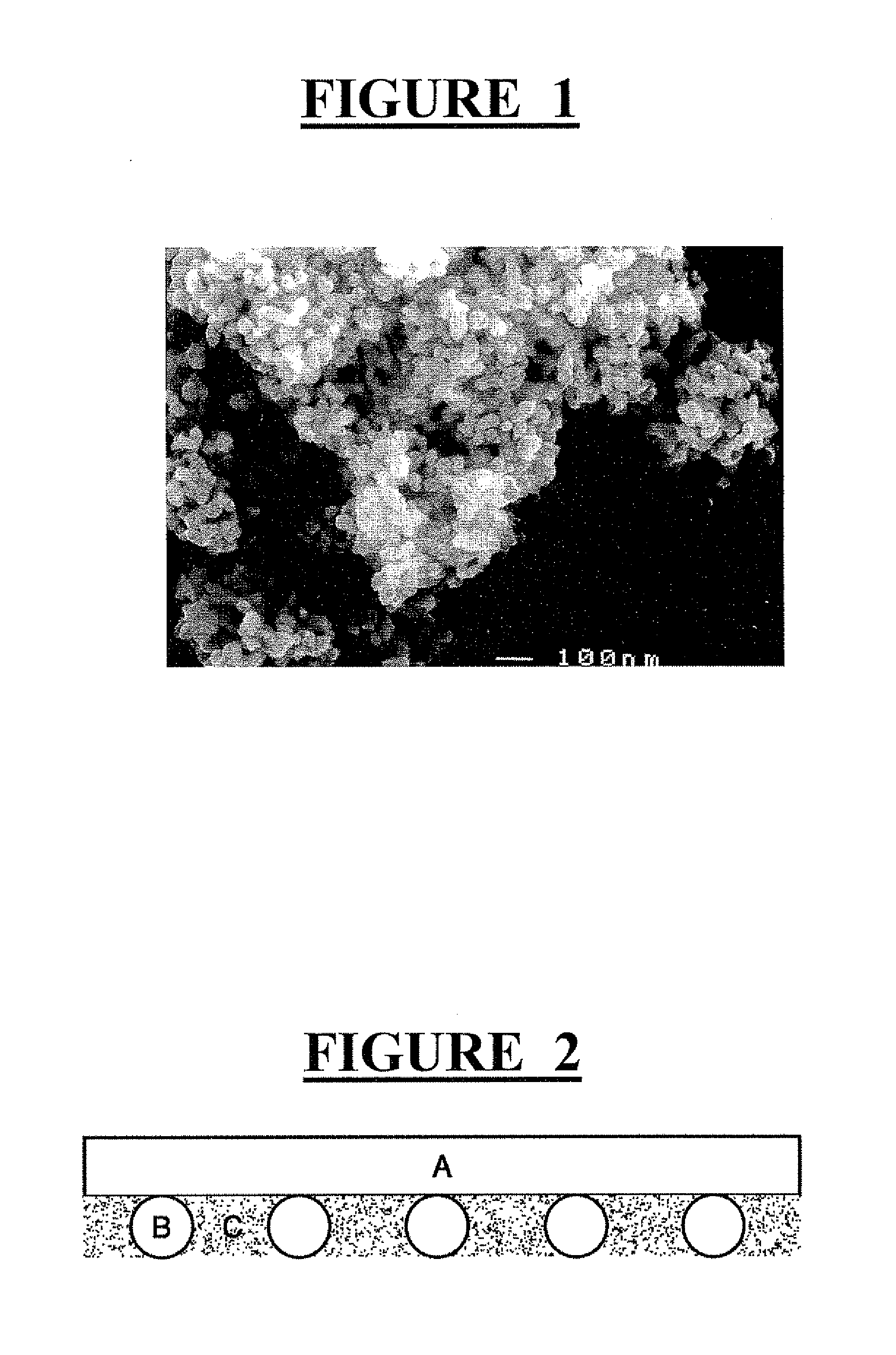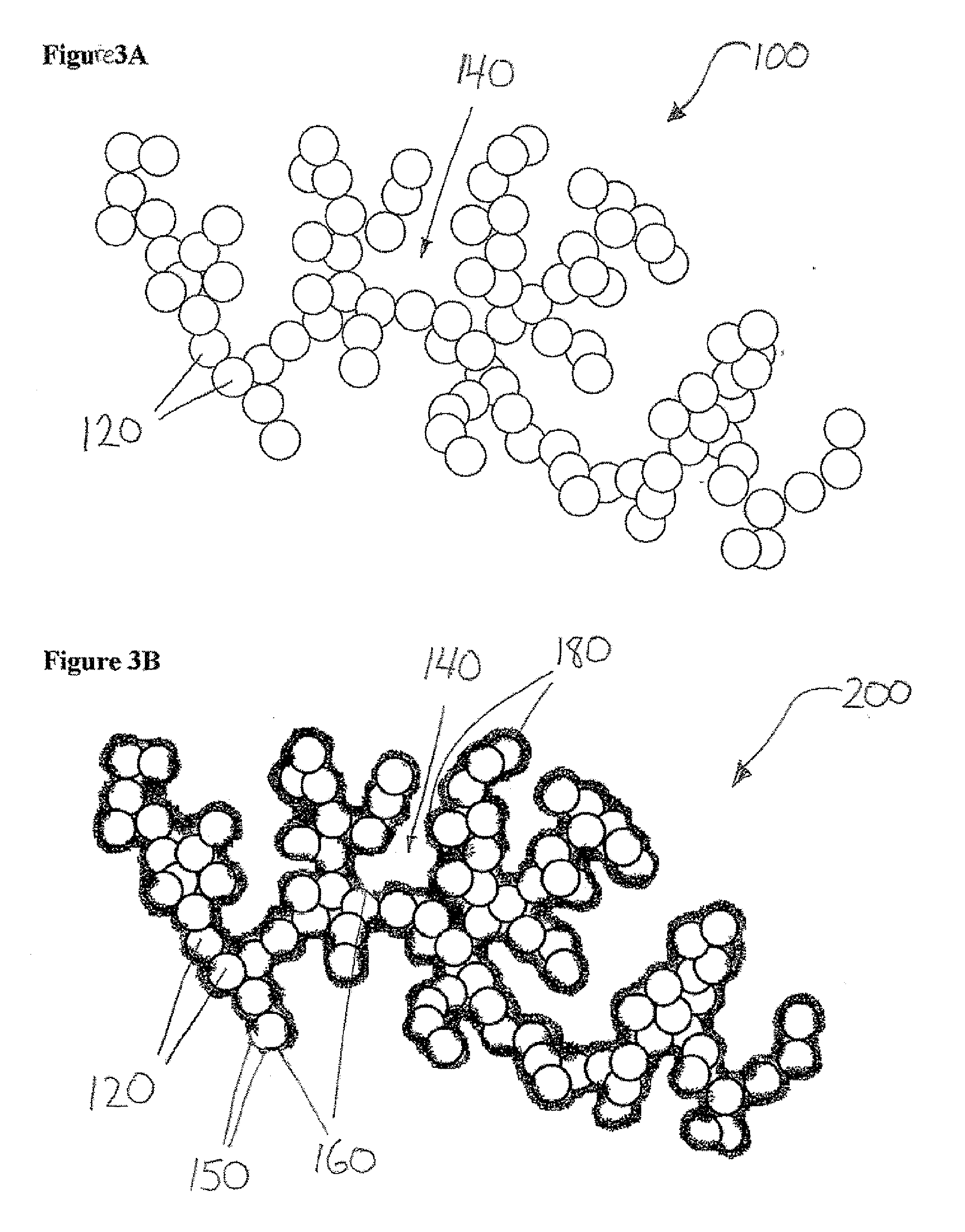Porous clusters of silver powder promoted by zirconium oxide for use as a catalyst in gas diffusion electrodes, and method for the production thereof
a technology of zirconium oxide and silver powder, which is applied in the direction of catalyst activation/preparation, metal/metal-oxide/metal-hydroxide catalyst, etc., can solve the problems of reducing electrode performance, reducing catalyst surface area, and reducing the effect of techniques
- Summary
- Abstract
- Description
- Claims
- Application Information
AI Technical Summary
Benefits of technology
Problems solved by technology
Method used
Image
Examples
example 1
[0152]The primary electrochemical performance of the electrodes was measured in a half cell with a nickel counter electrode in 25% KOH at 24-26° C. Polarization data (with IR drop correction, that is elimination of the resistance artifact between the reference electrode and the cathode) for the experimental electrode is as follows.
Polarization vs. current densityCurrent density, mA / cm22550100Polarization, mV−21−64−110
example 2
[0153]Electrochemical test of the electrode in a cycling (bifunctional) mode of operation was carried out at constant current density of 21.5 mA / cm2 in the same half cell and at the same conditions used for primary electrochemical performance.
[0154]The time of each cycle: anodic (charge) and cathodic (discharge) was 35 minutes.
[0155]The electrode's polarization, mV at the end of each cycle, is as follows:
# of cycleEnd of cathodic cycleEnd of anodic cycle1−20+5902−21+5983−20+584
[0156]After the 3rd cycle the electrode's polarization stayed unchanged for all the range of applied current densities. Taking into account the electrode's total silver content, the potentials at the end of anodic cycle correspond to the end of the silver metal conversion to AgO2 oxidation process.
[0157]Thus, there is a good indication from the data that electrochemical performance of air electrodes, catalyzed by ZrO2 promoted silver catalyst as per this invention will be stable at elevated temperatures, OCV c...
example 3
[0158]The electrode can be made with PTFE membranes with different Gurley numbers and different thickness hydrophobic layers in order to optimize performance. A Gurley number is the time in seconds it takes for 100 cc of air to pass through one-square inch of membrane when a constant pressure of 4.88 inches of water is applied.
PUM
| Property | Measurement | Unit |
|---|---|---|
| particle size | aaaaa | aaaaa |
| size | aaaaa | aaaaa |
| size | aaaaa | aaaaa |
Abstract
Description
Claims
Application Information
 Login to View More
Login to View More - R&D
- Intellectual Property
- Life Sciences
- Materials
- Tech Scout
- Unparalleled Data Quality
- Higher Quality Content
- 60% Fewer Hallucinations
Browse by: Latest US Patents, China's latest patents, Technical Efficacy Thesaurus, Application Domain, Technology Topic, Popular Technical Reports.
© 2025 PatSnap. All rights reserved.Legal|Privacy policy|Modern Slavery Act Transparency Statement|Sitemap|About US| Contact US: help@patsnap.com



